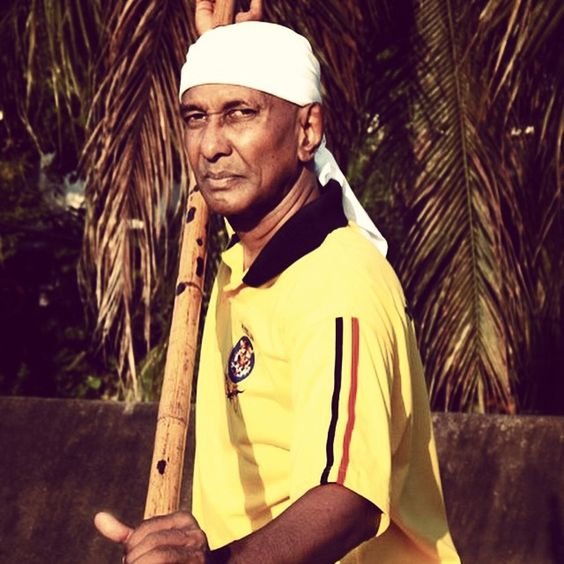Silambam: A Prominent Ancient Indian Martial art

Where many must have heard of the latter, as of course it is a movie, the former is a martial art form. They sound and are spelt in a very similar manner to each other but are poles apart. Where Silambam can be used as a way for the protagonist of Silambattam to beat up the goons, Silambattam remains a movie. So what is Silambam?

It is a form of Indian martial arts prominent in the Southern state of Tamil Nadu or Kerala. It is believed that the form has been in practice since the 4th century BC. The name Silambam has been derived from silambambu, a particular type of bamboo which is used to make the staff used in combat form. The bamboo is found in the hills of Kurinji, which is in Kerala. This martial art form has a series of historical references attached to its origin, spread, and influence. To begin with, the staff that is used in this martial art form is the way the Romans, Greeks and Egyptians got introduced to the use of staffs. The Silambam staff has not only influenced these empires but also Sri Lanka and Southeast Asia. All this was done during the reign of the Madurai empire in Southern India. If we move forward to the late 1700s, the kings of those times named Puli Thevar and Dheeran Chinnamalai had entire armies trained in Silambam. This army was the reason that the British army had a hard time fighting against them and conquering them. But sadly, once the British came to power in the Indian subcontinent, Silambam suffered just as other forms of combat did. They faced a ban and anyone who taught the form was hunted down. The traditional form of weaponry, that is sticks and swords were replaced by the modern form of weapons that is via guns and canons. The art is closely related to Kalaripayattu.

Just like any other martial art form or sport, even Silambam has stages. One has to cross all of them one by one and as one gets ready will only be promoted to the next one. To begin with, the first stage requires the students to master their footwork also known as Kaaladi. This has to be done before moving on to mastering spinning techniques or methods to change the spinning technique without stopping the rotation of the staff. The technique of empty hands form is also known as Kuttu Varisai. This is the second stage of training and this is the first time that one is given the opportunity to hold a Silambam in their own two bare hands. With time and rigorous training, the fighters learn how to move their feet in accordance with the movement of the stick. The reason for such training is that the practitioner should be able to fight multiple opponents at a time. The footwork of a fighter is of utmost importance as the feet’s movements decide how one retreats and advances. To be swift enough to not be in the range of the opponent’s blow requires swift foot movements. There are 16-foot positions that are required to be mastered before a practitioner can call himself or herself a master. Hitting and blocking and enabling the body to receive non-lethal blows is very essential for this combat form.
Finally, when the stage and the time arrive when the practitioner is one step away from becoming an expert in this martial art, the staff is sharpened at one end. While practicing Silambam, the team remains only sharpened, otherwise, in real life, it may be so that the tip is poisoned. The ultimate stage of Silambam or the final test comprises the practitioner fighting against multiple armed opponents.

The technique of fighting in Silambam comprises a fighter holding the stick in front of the body. Silambam is held by stretching the arms fully so that attacks can be made just by movements of the wrist. The sheer usage of the wrists makes it easier for the fighter to make blows with full potential and speed without having to move the body much. The wrists and the hands are trained to make firm but strong grips. There are three types of grips, the first is the ‘Hammer grip’ which is superior to all other types. One must place his or her hand down behind the weaker hand. The other type of grip is known as the ‘Ice grip’ which is the most effective during single-hand attacks and the ‘Poker grip’ which is used only for blocking and hitting.
The locks are also known as poottu and are a very important part of the defence as they defend the fighter from getting affected by the blows of the opponent. These locks not only help in defending but also in disabling the enemy’s weapon by taking it out of their hands. In order to disable the locks, the technique of Thirappu is used. There are a lot of techniques that are used in Silambam other than locking like blocking, parrying, rotary parrying, using the stick to hammer, and kolluvuthal which means blocking and attacking at the same time. Other moves include evasive moves such as sitting or kneeling or jumping high and then attacking the opponent. Just as seen in martial art movies or anyone having basic knowledge of martial arts, Silambam also uses techniques to attack pressure points. These pressure points are known as Varma Adi or Marma Adi. The advantage of doing so you ask? If one or more pressure points are attacked, the effect is not felt immediately but after a few moments, the opponent will drop the weapon himself or herself. The effect will be so fierce that a sharp pain will rise and the opponent will have no other option but to cripple. The whole process is also known as Solli which translates into challenging and successfully hitting. The martial art form also uses animal stances in order to predict the opponent’s next move.

As mentioned before Silambam is an art form that uses weapons as well. There are multiple weapons that are used such as Maduvu also known as Maru or Madu. It is used both for offensive and defensive purposes. Another weapon is Aruval, which looks like a longer version of a sickle and is best used for attacking purposes as even one strike can be lethal for the opponent. Kattari is the most famous weapon used. It is used by almost every warrior of every clan and is one of the most famous weapons. It has an H-shaped hand grip with a short knife attached to the front. It is used both, for an attack as well as for defense.
Those who practice Silambam have to wear a costume. The costume consists of langots which are of different colors, a chest guard, sleeveless vests, turbans, and canvas shoes. The arena where Silambam is practiced is on an even and hard surface. It has a radius of 20-25 feet and the match has four rounds with three breaks. A one-minute break at the end of the first round, then a three-minute break at the end of the second round, and another one-minute break at the end of the third round. There are 18 different styles of Silambam from Nillai Kalakki, Minnal Vettu, Minnal Veeran, Naga Pasanam, Thuluk Kanam, Kida Muttu to Tomman Kuthu, Paravan Vilayaatu, Paniyeri Mallan, Komberi Mookan, and many others.

The martial art today enjoys a special status given to it by the United Nations on January 30, 2019. The move was celebrated by practitioners and fans of this martial art worldwide. The World Silambam Federation was founded as recently as in the year 2010, on August 17. The first Silambam World Cup was organized on October 2, 2010, in Malaysia. Young practitioners from around the world took part in it. There is no doubt that this martial art has gained popularity in recent times and with time the popularity is bound to increase and nothing else. There is no argument that Silambam is one of the best ways to stay fit. It is a good way for self-defense but also helps to keep the cardiovascular system working. It stabilizes the practitioners mentally and emotionally, thereby improving focus. Hand and muscle coordination also improve as the muscles have to contract and relax simultaneously which makes the muscles more flexible. This brings us to the point of weight loss. Silambam aids weight loss and helps in burning excess calories. All in all not only does Silambam act as a skill of self-defense but also a way of staying healthy. The Tamil actor, Dhansika, who is a practitioner of Silambam has said, “ I was always fit, but Silambam made me so much fitter. Besides, I became calmer, happier, more focused. It is moving meditation for me- I would even go as far as to say that Silambam changed my life”.


